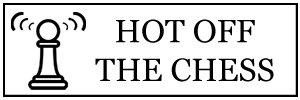
Having got his campaign in this year’s Norway Chess Tournament off to a good start with a win in round-1, Anish Giri suffered a setback in this round. The Dutchman would have his +1 wiped out by his French rival, Maxime Vachier-Lagrave. They debated the Sicilian Najdorf, in which Vachier-Lagrave’s 15…Rg8 seems to be a new invention.
The move calls into question White’s pawn thrust on the Kingside, and as it turns out, compells his g-pawn forward. This is not a bad thing in itself, after 16.g5 hxg5 17.hxg5 Ne5 (17…Rxg5 18.Rh1+ Rg8 19.Rxg8+ Nxg8 sees Black doing all right here) 18.Qxf4 Nh7 19.Kb1 Nxg5 there are equal chances. White will most likely focus on the Kingside with Rdg1, while Black looks towards the Queenside with …Rb8. His King looks quite all right in the centre also.
Giri obviously did not want to commit so early, looking to maintain the tension and prepare the ground before advancing — hence his 16.Rdg1. This actually looks a good move in itself, (though perhaps a little ‘laid back’), but the position did not allow for it, as demonstrated by Vachier-Lagrave’s 16…d5! (See diagram, below.)
This is a seriously good move by Black, played with huge initiative and White has to be very careful. The whole point is that …Ne5 is now looming, and this is no small thing. From the diagram position, Giri had few choices of how to continue if he wanted to avoid catastrophe and luckily chose wisely with 17.exd5. Other moves seem utterly inadequate, further evidence of what trouble he is in here. Vachier-Lagrave continued with the inevitable 17…Ne5 and now this is White’s problem, finding a good square for the Queen.
Giri chose 18.Qh3, (Qb2 was another option, but this would be nicely met with …Bb7), which is definitely the safest choice. However, whether it is a particularly ‘good’ square for the Queen remains to be seen. This is especially so after his opponent’s 18…exd5, which sees the light-squared bishop firing along the diagonal from c8 to h3, where only the g4-pawn stands between it and the White queen. To add to the headache, the g4-pawn itself is looking extremely dicey, frozen to its spot, with Black’s pieces piling on it. h6-h5 is coming, when Black is threatening to win it and obtain two beautiful connected passed pawns.
To be totally fair, White’s position is already extremely difficult, but Giri’s 19.Re1 did not help him very much. Alarmingly, the defensive 19.h5 was probably the best that White had at his disposal, here, pro-actively preventing Black from playing …h5. I am not actually sure what Giri’s move aimed to do, to be honest, it just seemed to me a bit ‘ok have it then’. But Vachier-Lagrave was in no hurry, choosing the patient-yet-potent 19…Kf8 — Black wants to play …Bc5 and it is very prudent to first take the King out of the line of fire from White’s rook. This led to an extremely commanding situation for Black, and White was soon being swamped.
The above diagram shows the situation after 23…Ne4, and White’s position is virtually collapsed. From here, Giri folded quickly, there came: 24.Bf3 Nxf2 25.Bxa8 Ned3+! 26.Kd2 Nxe1 27.Qxf2 (Kxe1 changes little) d3! 28.Qxe1 Be3+ and White resigned. A very nice game from Maxime Vachier-Lagrave.
That being said, I think that it is also fair to say that this is a game in which Anish Giri received some comeuppance for his current way of playing. He played the Candidates Tournament in a rather blasé fashion, where he seemed to me to be quite content just to hold things together and sit on the fence. And power to his elbow, there is nothing wrong with this approach and it may pay off here and there. However, to do it too much, or as a consistent style of play, and bring it to this event also, is extremely risky.
In chess, one must play what the position dictates, as observed by Steinitz in his laws of chess — “the side with the advantage must attack or risk losing the advantage”. This is a clear case of what happened in this game, in refusing to undertake action with 16.g5, in favour of 16.Rdg1, Giri handed the initiative to his opponent, who never looked back. I feel that if he continues to employ this attitude in his games, then his opponents will find ways of using it to their advantage. Especially at this level. They will bank on it and prepare for it, just as Maxime Vachier-Lagrave did in this game. And Giri will have yet more painful losses like this to come.
The other games were drawn. Carsen-Topalov and Grandelius-Aronian were rather uneventful. Eljanov-Harikrishna resulted in an endgame that was much too simplified for either player to do very much. Li Chao got into a Vienna Game with Vladimir Kramnik, which saw White let his queen go for two rooks. Once the remaining minor pieces were exchanged, however, Black actually had the worst of things and it was lucky that he had perpetual check or he would most likely have lost.
Standings after 2 rounds:
Vachier-Lagrave, Carlsen, Kramnik — 1½
Li Chao, Topalov, Giri, Aronian — 1
Grandelius, Harikrishna, Eljanov — ½
Round 3: Thursday 21st April
Harikrishna-Topalov
Aronian-Li Chao
Carlsen-Grandelius
Kramnik-Giri
Vachier-Lagrave–Eljanov
Play begins at 16:00 local time. If you need to, you can check your time, here.
More Information: Altibox Norway Chess 2016 Website
[pgn height=300 layout=horizontal showmoves=figurine initialgame=first initialHalfmove=]
[Event “4th Norway Chess 2016”]
[Site “Stavanger NOR”]
[Date “2016.04.20”]
[Round “2.1”]
[White “Grandelius, Nils”]
[Black “Aronian, Levon”]
[Result “1/2-1/2”]
[WhiteTitle “GM”]
[BlackTitle “GM”]
[WhiteElo “2649”]
[BlackElo “2784”]
[ECO “C65”]
[Opening “Ruy Lopez”]
[Variation “Berlin defence”]
[WhiteFideId “1710400”]
[BlackFideId “13300474”]
[EventDate “2016.04.19”]1. e4 e5 2. Nf3 Nc6 3. Bb5 Nf6 4. d3 Bc5 5. Nbd2 O-O 6. Bxc6 bxc6 7. Nxe5 Re8 8.
Nef3 d5 9. O-O Bg4 10. h3 Bh5 11. Qe2 h6 12. Re1 a5 13. Qf1 a4 14. e5 Nd7 15. d4
Bb6 16. c4 Nf8 17. c5 Ba5 18. Re3 Ne6 19. g4 Bg6 20. a3 f5 21. b4 axb3 22. Nxb3
fxg4 23. hxg4 Rf8 24. Nh2 Be4 25. Rg3 Qe7 26. Ra2 g5 27. Rb2 Qh7 28. Qd1 Qf7 29.
Qe2 Qg6 30. Qd1 Qf7 31. Qe2 Qg6 32. Qd1 1/2-1/2[Event “4th Norway Chess 2016”]
[Site “Stavanger NOR”]
[Date “2016.04.20”]
[Round “2.2”]
[White “Li, Chao b”]
[Black “Kramnik, Vladimir”]
[Result “1/2-1/2”]
[WhiteTitle “GM”]
[BlackTitle “GM”]
[WhiteElo “2755”]
[BlackElo “2801”]
[ECO “C26”]
[Opening “Vienna”]
[Variation “Paulsen-Mieses variation”]
[WhiteFideId “8604436”]
[BlackFideId “4101588”]
[EventDate “2016.04.19”]1. e4 e5 2. Nc3 Nf6 3. g3 Bc5 4. Bg2 c6 5. Nge2 d5 6. exd5 cxd5 7. d4 exd4 8.
Nxd4 O-O 9. O-O Bg4 10. Qd3 Bxd4 11. Qxd4 Nc6 12. Qc5 d4 13. h3 Bxh3 14. Bxh3
dxc3 15. bxc3 Re8 16. Qb5 Qa5 17. a4 Qxc3 18. Bb2 Qxc2 19. Rac1 Qe2 20. Bg2 Qe7
21. Bxf6 Qxf6 22. Qxb7 Nd4 23. Rfe1 h5 24. Qxa8 Rxa8 25. Bxa8 h4 26. Rc8+ Kh7
27. Be4+ g6 28. gxh4 Qe6 29. Re8 Qg4+ 30. Kf1 Qxh4 31. Re7 Qh3+ 32. Kg1 Qg4+ 33.
Kf1 Qh3+ 34. Kg1 Kg7 35. Bd5 Qg4+ 36. Kf1 Qh3+ 37. Kg1 Nf3+ 38. Bxf3 Qxf3 39.
Rxa7 Qg4+ 40. Kf1 Qh3+ 41. Kg1 Qg4+ 42. Kf1 Qh3+ 1/2-1/2
[Event “4th Norway Chess 2016”]
[Site “Stavanger NOR”]
[Date “2016.04.20”]
[Round “2.3”]
[White “Giri, Anish”]
[Black “Vachier-Lagrave, Maxime”]
[Result “0-1”]
[WhiteTitle “GM”]
[BlackTitle “GM”]
[WhiteElo “2790”]
[BlackElo “2788”]
[ECO “B96”]
[Opening “Sicilian”]
[Variation “Najdorf, 7.f4”]
[WhiteFideId “24116068”]
[BlackFideId “623539”]
[EventDate “2016.04.19”]
1. e4 c5 2. Nf3 d6 3. d4 cxd4 4. Nxd4 Nf6 5. Nc3 a6 6. Bg5 e6 7. f4 h6 8. Bh4
Qb6 9. a3 Be7 10. Bf2 Qc7 11. Qf3 Nbd7 12. O-O-O b5 13. g4 g5 14. h4 gxf4 15.
Be2 Rg8 16. Rdg1 d5 17. exd5 Ne5 18. Qh3 exd5 19. Re1 Kf8 20. Nf5 Bxf5 21. gxf5
Bc5 22. Qf1 d4 23. Nb1 Ne4 24. Bf3 Nxf2 25. Bxa8 Ned3+ 26. Kd2 Nxe1 27. Qxf2 d3
28. Qxe1 Be3+ 0-1
[Event “4th Norway Chess 2016”]
[Site “Stavanger NOR”]
[Date “2016.04.20”]
[Round “2.4”]
[White “Topalov, Veselin”]
[Black “Carlsen, Magnus”]
[Result “1/2-1/2”]
[WhiteTitle “GM”]
[BlackTitle “GM”]
[WhiteElo “2754”]
[BlackElo “2851”]
[ECO “D37”]
[Opening “QGD”]
[Variation “4.Nf3”]
[WhiteFideId “2900084”]
[BlackFideId “1503014”]
[EventDate “2016.04.19”]
1. d4 Nf6 2. c4 e6 3. Nf3 d5 4. Nc3 Nbd7 5. Qc2 c6 6. cxd5 exd5 7. Bf4 Nh5 8. g3
Nxf4 9. gxf4 Nb6 10. e3 g6 11. h4 Bb4 12. Bd3 Bg4 13. Ne5 Bh5 14. Be2 Bxe2 15.
Kxe2 f6 16. Nd3 Bxc3 17. Qxc3 Qe7 18. Qc5 Nc4 19. Qxe7+ Kxe7 20. h5 Rag8 21.
hxg6 hxg6 22. a4 a5 23. b3 Nd6 24. Rag1 Kf7 25. Rc1 Rh5 26. Rhg1 Rh2 27. Rh1 Rh5
28. Rhg1 Rh2 29. Rh1 Rh5 1/2-1/2
[Event “4th Norway Chess 2016”]
[Site “Stavanger NOR”]
[Date “2016.04.20”]
[Round “2.5”]
[White “Eljanov, Pavel”]
[Black “Harikrishna, Pentala”]
[Result “1/2-1/2”]
[WhiteTitle “GM”]
[BlackTitle “GM”]
[WhiteElo “2765”]
[BlackElo “2763”]
[ECO “E20”]
[Opening “Nimzo-Indian”]
[Variation “Kmoch variation”]
[WhiteFideId “14102951”]
[BlackFideId “5007003”]
[EventDate “2016.04.19”]
1. d4 Nf6 2. c4 e6 3. Nc3 Bb4 4. f3 c5 5. d5 b5 6. e4 O-O 7. Nh3 d6 8. Nf4 e5 9.
Ne2 Nh5 10. g4 Qh4+ 11. Kd2 Nf4 12. Nxf4 exf4 13. Kc2 bxc4 14. Bxf4 Qf6 15. Qd2
Nd7 16. Be2 Qe7 17. Bxc4 Rb8 18. b3 Nb6 19. Qd3 Bd7 20. Bd2 Nxc4 21. bxc4 Rb6
22. Rhb1 Rfb8 23. a3 Bxc3 24. Bxc3 Ba4+ 25. Kc1 h5 26. Rxb6 Rxb6 27. Rb1 hxg4
28. f4 Rxb1+ 29. Kxb1 Qb7+ 30. Bb2 Qb3 31. Qxb3 Bxb3 32. e5 dxe5 33. d6 Kf8 34.
Bxe5 g6 35. d7 Ke7 36. Kb2 Bxc4 37. Kc3 Bb5 38. Bd6+ Kxd7 39. Bxc5 Ke6 40. Kd4
a6 41. Ke3 Bc6 42. Bb4 Bb5 43. Bc5 Bc6 44. Bb4 Bb5 45. Bc5 1/2-1/2
[/pgn]

